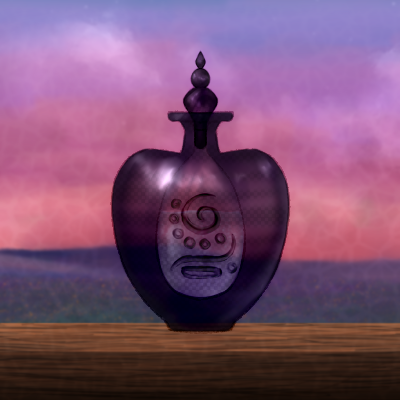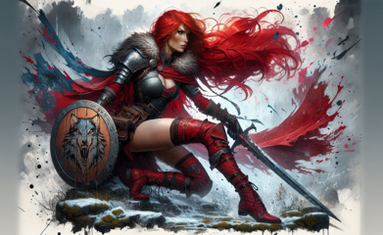HOME | DD
 LS-DM — LS|M|Horns
LS-DM — LS|M|Horns

Published: 2017-12-05 21:54:51 +0000 UTC; Views: 184; Favourites: 1; Downloads: 6
Redirect to original
Description
ENG
[Section "Mutagens" - Horns]
Type: Mutagen
Name: Horns
Designation in the mutagen genotype: Hor
Detection of mutations near the city: ̶s̶o̶u̶r̶c̶e̶ ̶n̶o̶t̶ ̶f̶o̶u̶n̶d̶.̶
Mutagen compatible with: Classic and Forest types.
Probability of transmission to offspring:
26% — if only one parent has a mutagen,
84% — if both parents have a mutagen.
Property: Your horse will grow horns from scratch, without changes, at any age the horse will receive the mutagen.
Color: Horns can be the color of the skull, hooves, or similar to the color body of the horse.
Description: Horns grow only in the area marked in fig. II (forehead, bridge of the nose and temporal part). Most often there are two horns, less often one or three, and much less often you can find combined and figured horns.
Horns come in different shapes and sizes:
- flat (I) or round (III) in cross-section
- smooth or bumpy
- straight, slightly twisted, spiral, figured
- bend at an angle
"Pillow?"
Most often you can find flat (I) horns in the areas of the forehead, bridge of the nose and temples, round (III) horns are most often located on the frontal part, never on the bridge of the nose, and in some cases they are located in the temporal part, but they can only appear if horses have formed “pillows” (VI), which are located above the muscles and do not interfere with their movement by being attached to the outer temporal part of the skull (V), which are usually always visible on live skulls (IV).
"Excrescence?"
When the round horn on the frontal area does not develop properly, it can become a small excrescence and "spread" into the horn growth area. Such a horn was nicknamed “excrescence” (VII). Despite its small size, the horn can be of any shape. But when a horse has a “excrescence,” then other horns cannot appear on it, but this fact does not affect whether the offspring will have a excrescence or not.
"Combination?"
Usually the horns grow separately from each other and do not intersect, but there are cases when they are connected to each other by “webs”, and “supporting membranes” may also appear (IX). Thanks to the “webbing”, such horns are considered combined. They come in different shapes and lengths. As a rule, the “webs” are always dense, but sometimes you can find openwork ones.
RUS
[Раздел «Мутагены» - Рога]
Тип: Мутаген
Название: Рога
Обозначение в генотипе мутагена: Hor
Обнаружение мутации вблизи города: источник не найден.
Мутаген совместим с: Классическим и Лесным типами.
Вероятность передачи потомству:
26% — если только один родитель имеет мутаген,
84% — если оба родителя имеют мутаген.
Свойство: У вашей лошади будут расти рога с нуля, без разницы, в каком возрасте лошадь получит мутаген.
Цвет: Рога могут быть цветом черепа, копыт или схожим с мастью лошади.
Описание: Рога растут только в зоне отмеченной на рис. II (лоб, переносица и височная часть). Чаще всего рогов два, реже один или три, намного реже можно встретить комбинированные и фигурные рога.
Рога бывают разной формы и размера:
— плоские (I) или круглые (III) в сечении
— гладкие или бугристые
— прямые, слегка закрученными, спиральными, фигурными
— сгибаться под углом
«Подушка?»
Чаше всего можно встретить плоские (I) рога в зонах лба, переносицы и висков, круглые (III) чаще располагаются на лобной части, никогда на переносице и в некоторых случаях они располагаются в височной части, но появиться они могут только при условии, что у лошади образовались «подушки» (VI), которые располагаются над мышцами и не мешают их движению тем, что крепятся на внешней височной части черепа (V), которые обычно всегда видны у живых черепов (IV).
«Шишка?»
Когда круглый рог на лобной части не развивается должным образом, он может превратиться в бугорок небольшой высоты и «растечься» на зону роста рогов. Такой рог прозвали «шишкой» (VII). Несмотря на малый размер, рог может быть любой формы. Но когда у лошади есть «шишка», то другие рога у неё появиться не могут, но данный факт не влияет на то, будет у потомства шишка или нет.
«Комбинация?»
Обычно рога растут отдельно друг от друга и не пересекаются, но бывают случаи, когда они соединяются между собой «перепонками», а также могут появиться «поддерживающие перепонки» (IX). Благодаря «перепонкам» такие рога считаются комбинированными. Они бывают разной формы и длинны. Как правило, «перепонки» всегда плотные, но порой можно встретить и ажурные.
Mutagens || Shop || Menu || latest update 08.09.2023
























